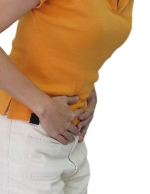Overview of Intestinal Physiology

The gastrointestinal system is the route through which nutrients and fluids enter our body. It is composed of the mouth, pharynx, esophagus, stomach, small and large intestine, liver, biliary system, and pancreas. Each part has a specific function. For example, the esophagus is for the simple passage of food, the stomach is for storage, and the small intestine is for digestion and absorption.
The muscles of the intestines (gut) are combination of circular and longitudinal muscles. The circular layers surround the gut and the longitudinal layer extends length-wise along the intestines. This arrangement allows for peristalsis (pushing and movement of food along the gastrointestinal tract). The intestinal muscles, like the heart muscles, are smooth muscles and are largely involuntary. That is, they are different from the muscles of the hand and legs, which are voluntary.
Several factors contribute to the motility of the intestinal tract. These factors include electrical waves (slow waves and spikes), voltage level of the resting membrane, entry of calcium ions into the muscle cells, and the tonic (or rhythmic) contractions of the smooth muscles. Many of the medications that affect the motility of the intestines and that are used to alleviate the symptoms of IBS will target one or more of these factors. A complex system involving neural control, neurotransmitters, autonomic control (parasympathetic and sympathetic), GI reflexes, and hormones help coordinate the functional movements of the GI tract.
Just as in the heart, the intestinal tract has its own electrical activity. These activities produce two types of electrical waves: slow waves and spike potentials. The slow waves determine the rhythmic contractions of the intestines through the spike potentials when a minimum voltage is reached. Along with the slow waves and spike potentials (which causes the muscle contraction), the voltage of resting membrane potential (or how excitable the nerve is) is important in determining muscle contraction. Certain factors can increase this potential and stimulate muscle contraction (e.g., stretching) others can make the muscle fiber less excitable (e.g., epinephrine). After the action potential has started, it is the amount of calcium ions entering the muscle cell that determines how large the muscle contraction will be. It can be compared to a car. Once the car has been started, how far you can go depends on how much gas you have in the car. The last determinant of intestinal motility is the intrinsic tonicity of the muscle itself.
Together with the electrical activities of the intestinal smooth muscles, the GI tract has its own nervous system (the enteric nervous system) which directs the neural control of the digestive system. Just as with the central nervous system, the enteric nervous system is well supplied with neurons, neurotransmitters, reflexes, and hormones. These different elements, when working properly, will coordinate peristalsis and the digestion and absorption of food.
